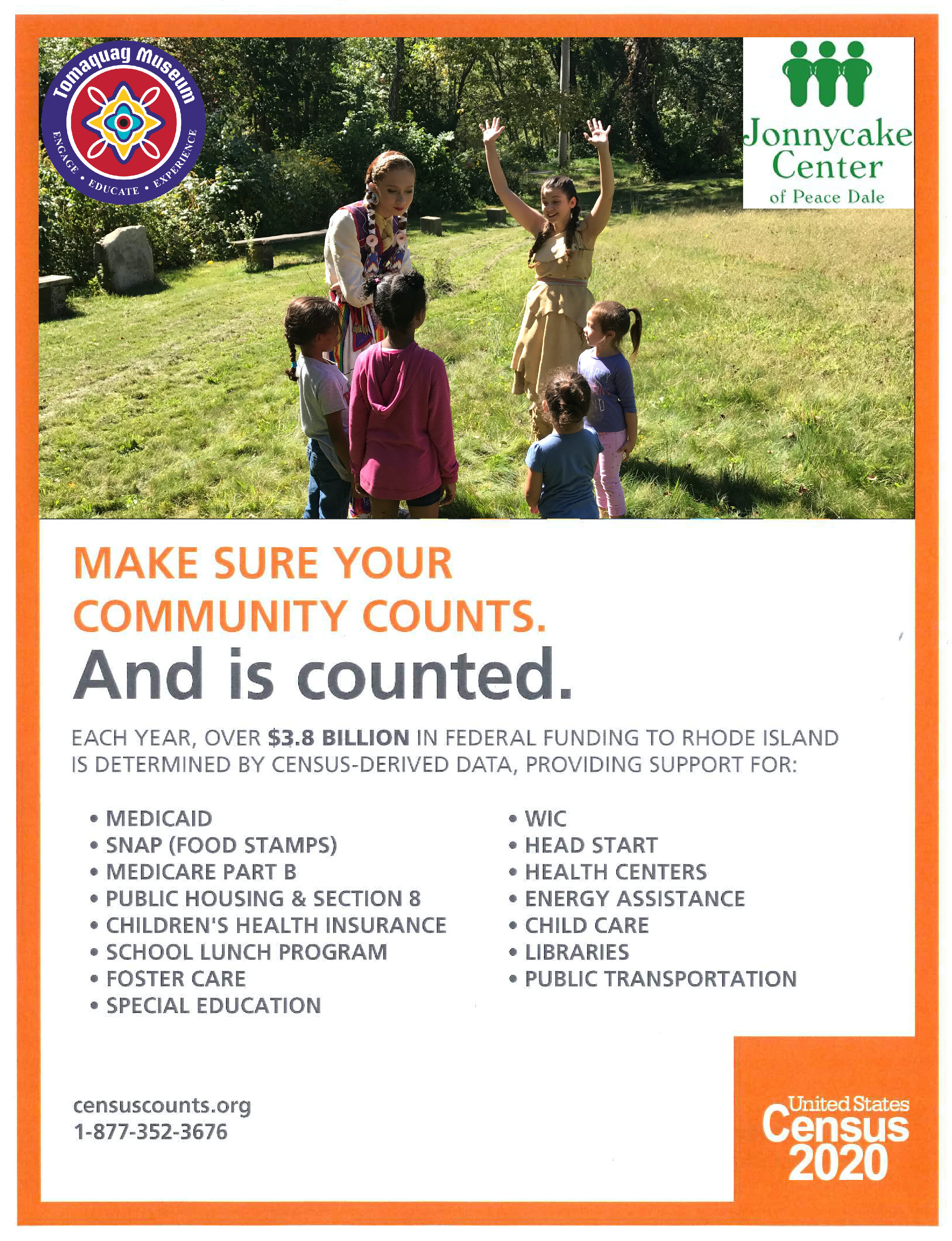Census 2020: History of Indigenous Invisibility-Be Counted!
Why does the 2020 Census Matter?
The census counts all people living in the United States. It ensures essential resources, i.e. tax dollars are allocated for your local community, municipality and state. These resources include access to education, childcare, affordable housing, healthcare, public transportation, road maintenance, foster care, food security, libraries, representation in congress and so many more benefits to your community not often realized.
The United States Census Bureau, in response to the COVID-19 pandemic had initially extended the 2020 enumeration timeline from October 31, but has now shortened it to September 30, 2020, which reduces the counting period by 31 days. The extended time was initially allotted to create additional access for Enumerators but since the pandemic had closed so many scheduled outreach events, it completely reduced community gatherings and stopped most door to door data collection. This shortened deadline will not only affect the overall accuracy of the 2020 Census calculations, but it will undoubtedly impact Indigenous communities the hardest, as historically Indigenous people are drastically under counted by astronomical numbers compared with other populations in the United States.
(Update: A temporary restraining order was issued September 5 by a U.S. District Judge in California, preventing the Census Bureau from winding down operations prematurely until a preliminary injunction is held September 17. Read about it HERE)
(Another Update: The winding down of the 2020 census must remain on hold nationwide through Sept. 24 at the latest, a federal judge in California has ordered. HERE)
(Update upon Update) Court Order Keeps Census in Limbo As Counting Date Looms. HERE
Why are Indigenous communities historically and largely under counted by the United States census?
From 1790, the year of the first decennial census until 1850, Native Americans were not counted on any census and were only first enumerated with the general population (meaning only outside reservations) for the first time in 1860. This is partly due to the infamous Supreme Court case Dred Scott v Sandford (1856) which determined that Scott, an emancipated aka ‘free man’ who in losing his case returned him to enslaved status, therefore constitutionally upholding the institution of slavery throughout the United States. However, in the other outcome in the case, which also ruled that Indigenous people could only become citizens through naturalization e.g. not through birth, and would only then be counted if they left their reservations and lived within the general population and paid taxes.
Indigenous people were deliberately under counted due to the federal laws at the time. But there are many other governmental and social policies that also contributed to the overall lack of representation in the census. Some of these include, but are not limited to: erasure policies, colonization constructs, and land dispossession strategies. Locally, in Rhode Island, the Narragansett (as well as other tribal nations) were also being subjugated in a system of white supremacy which attempted to eradicate the Indigenous population through conquest, disease, enslavement, displacement, forced assimilation and education and land dispossession. The lack of representation in the census was a result of this entrenched and racist system that still reverberates throughout Indian Country to this day.
In 1880-82, the state of Rhode Island and Providence Plantations, detribalized the Narragansett people and sold most of their remaining lands, leaving the tribe only two and half acres adjacent to the Narragansett Indian Church in Charlestown. Detribalization adversely affected the Narragansett tribal community through the loss of land ownership. However, in 1978 the tribe received 1800 acres of land back through the Land Claim Settlement Act and in 1983 gained federal acknowledgement and recognition with a nation to nation status as a fully sovereign entity.
When did American Indians become citizens and get the right to vote?
It wasn’t until the 1900 census that Native people were finally eligible to be fully enumerated living both within the general population as well as within the reservation system. One of the main reasons that Native communities were not fully counted in the census for 110 years was largely due to their status as non-citizens living apart from American society within the government’s reservation system. With the ratification of the 14th Amendment in 1868, which gave citizenship to all people born within the United States, meaning formerly enslaved people, it was then interpreted by the courts that this somehow did not apply to the Indigenous people of this land until the Indian Citizenship Act was passed in 1924. But it wasn’t until 1957 that Native Americans were fully given the right to vote in all states and territories. Now is the opportunity for Indigenous people to break the cycle of being under counted in the census and start being fully represented as citizens of the United States with the resources and representation they are entitled to. The next ten years depends on you. BE COUNTED!!!
By Anthony M. Belz, Archivist/Collection Manager and Lorén Spears, (Narragansett) Executive Director
Claim your identity.
Check American Indian/Alaska Native on the Census Form
Include Your Tribal Affiliation
Count All Members of Your Household including children under 5 Years old, who are one of the most under counted group of people on the census







